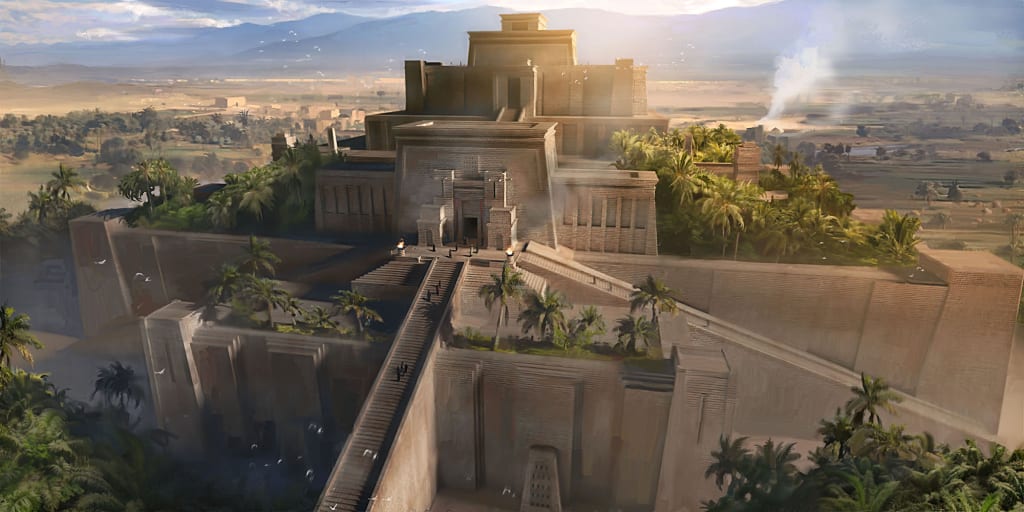Sumerian Ziggurats: Majestic Monuments of Ancient Mesopotamia
History

The Sumerian ziggurats stand as towering testaments to the architectural prowess and religious fervor of one of the world's earliest civilizations. These awe-inspiring structures not only dominated the ancient Mesopotamian skyline but also played a central role in the cultural and spiritual life of the Sumerians. This article delves into the history, structure, purpose, and legacy of these ancient marvels, providing a comprehensive overview of their significance.
History and Origins of Sumerian Ziggurats
The ziggurats of Sumer, the earliest known civilization in southern Mesopotamia (modern-day Iraq), date back to the late 4th millennium BCE. The Sumerians, renowned for their innovations in writing, governance, and architecture, constructed these massive stepped pyramids to honor their gods. The ziggurats were built over several centuries, with the most prominent examples emerging during the Ur III period (circa 2100-2000 BCE).
Architectural Features and Construction Techniques
Sumerian ziggurats were characterized by their distinctive stepped design, typically comprising a series of terraced platforms that receded inwards as they rose. These structures were made primarily of mud bricks, with the core often filled with a combination of mud and bricks, and an outer layer of baked bricks. The bricks were bonded with bitumen, a naturally occurring tar, which provided additional durability.
The base of a ziggurat was usually rectangular or square, with dimensions varying considerably depending on the site and era. Some of the largest ziggurats, such as the Great Ziggurat of Ur, measured approximately 64 meters (210 feet) in length and width and stood over 30 meters (98 feet) tall. Access to the temple at the summit was typically provided by a series of staircases or ramps, symbolizing the ascent to the divine.
Religious Significance and Function
Ziggurats served as the physical and spiritual centers of Sumerian cities. Each ziggurat was dedicated to a specific deity, reflecting the polytheistic nature of Sumerian religion. The summit of the ziggurat housed a temple or shrine where priests conducted rituals and offered sacrifices to appease and honor the gods. These elevated sanctuaries were believed to be dwelling places for the deities, providing a bridge between heaven and earth.
The construction of a ziggurat was an act of devotion, symbolizing the community's dedication to their god. The towering height of these structures not only demonstrated the power and wealth of the city-state but also underscored the importance of religion in Sumerian society.
Prominent Examples of Sumerian Ziggurats
Several ziggurats from the Sumerian period have been discovered and studied extensively. Among the most notable are:
- The Great Ziggurat of Ur: Located in the ancient city of Ur, this ziggurat is one of the best-preserved and most impressive examples. Built during the reign of King Ur-Nammu around 2100 BCE, it was dedicated to the moon god Nanna.
- The Ziggurat of Eridu: Eridu, often considered the oldest city in Mesopotamia, housed a ziggurat dedicated to the god Enki. Although less well-preserved than the ziggurat of Ur, it holds significant historical importance.
- The White Temple and Ziggurat of Uruk: One of the earliest known ziggurats, this structure was built in honor of the sky god Anu. It showcases the early development of ziggurat architecture.
Legacy and Influence
The architectural innovation of the Sumerian ziggurats influenced subsequent cultures in Mesopotamia and beyond. The concept of building monumental structures to honor deities was adopted and adapted by the Akkadians, Babylonians, and Assyrians, leading to the construction of similar edifices such as the Etemenanki in Babylon, often associated with the biblical Tower of Babel.
Modern archaeological excavations and studies have provided valuable insights into the construction techniques, religious practices, and societal organization of the Sumerians. The ziggurats continue to captivate historians, archaeologists, and the public, offering a glimpse into the grandeur of ancient Mesopotamian civilization.
Conclusion
Sumerian ziggurats remain among the most iconic and enigmatic structures of the ancient world. Their architectural brilliance, religious significance, and enduring legacy highlight the ingenuity and spirituality of the Sumerian people. As we uncover more about these magnificent monuments, we gain a deeper appreciation for the rich cultural heritage of ancient Mesopotamia.
About the Creator
Marveline Merab
“History never repeats itself. Man always does.”
― Voltaire
Enjoyed the story? Support the Creator.
Subscribe for free to receive all their stories in your feed. You could also pledge your support or give them a one-off tip, letting them know you appreciate their work.






Comments
There are no comments for this story
Be the first to respond and start the conversation.